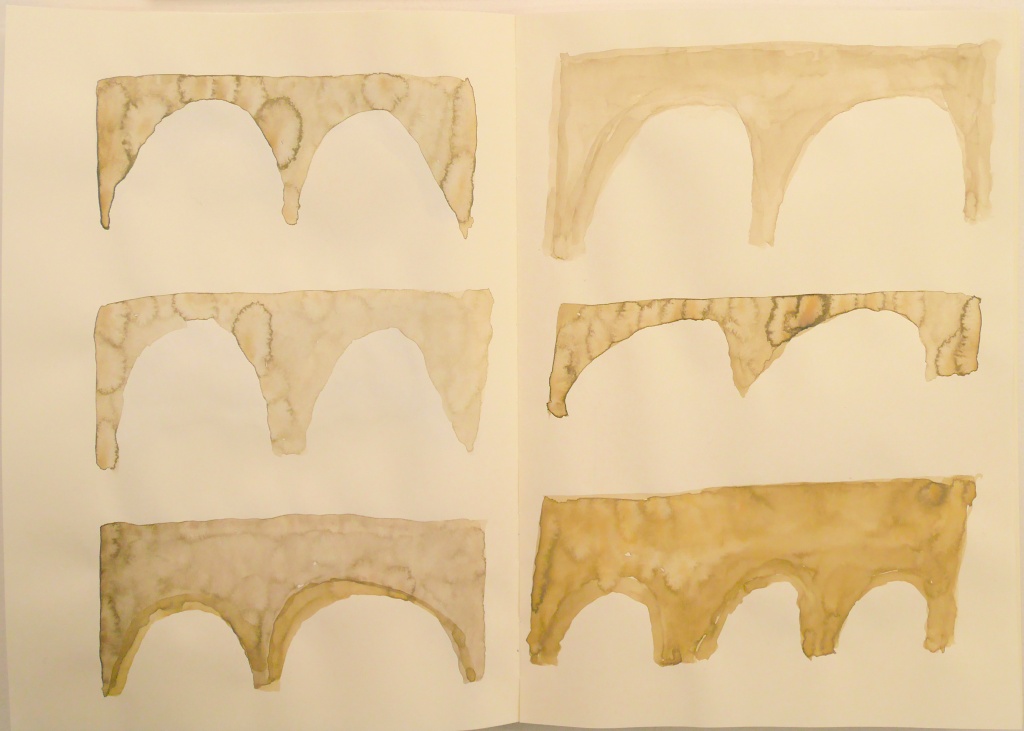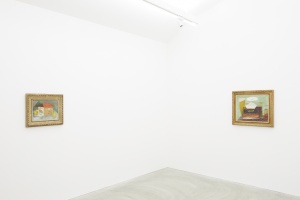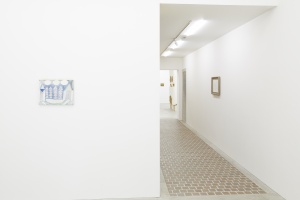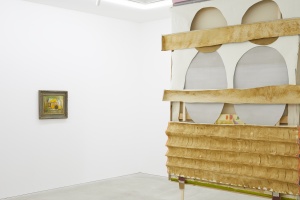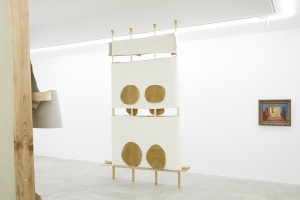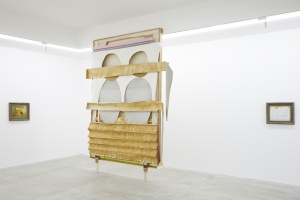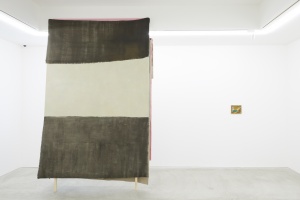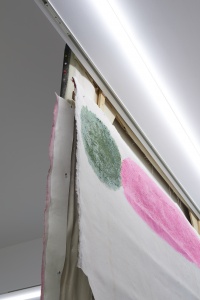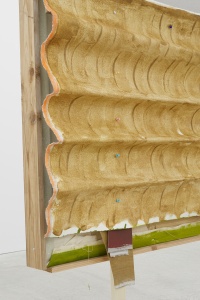Tomio Koyama Gallery is pleased to present “cut and restrain,” an exhibition with Hiroshi Sugito. Marking the artist’s sixth solo presentation at the gallery, the exhibition will feature a selection of new works.
【Hiroshi Sugito: Recent Activities and Acclaim】
Hiroshi Sugito has exhibited extensively both in Japan and internationally since commencing his career as an artist in the 1990s. In recent years he has held numerous solo exhibitions in museums across Japan, further continuing to widen his platform of presentation.
In 2015 Sugito held two concurrent solo exhibitions: “prime and foundation” at the Miyagi Museum of Art, and “frame and refrain” at the Bernard Buffet Museum in Shizuoka. For his 2016 solo show “particles and release” at the Toyota Municipal Museum of Art, he collaborated with architect Jun Aoki to devise the overall layout and structure of the exhibition. In “Hiroshi Sugito module or lacuna” held in 2017 at the Tokyo Metropolitan Art Museum, Sugito had carefully engaged with the museum’s architecture designed by Kunio Maekawa to produce both an exhibition structure and works that responded to the space of the museum, including his large-scale masterpiece “module” comprising a series of Tokoname tiles that spanned a width of 15 meters and a height of 4 meters. Sugito gained high acclaim for this exhibition for which he received the 68th Ministry of Education Award for Fine Art (2017).
Sugito also participated in “Atsuhiko Misawa’s Animal House: House of Enigmas” at the Shoto Museum of Art in 2017, followed by “ATSUHIKO MISAWA: Animals in Toyama” at the Toyama Prefectural Museum of Art and Design in 2018, both in which he collaborated and partook in open studios with Atsuhiko Misawa, Katsura Funakoshi, Masato Kobayashi, and Masashi Asada as one of Japan’s leading contemporary artists. This exhibition that created a situation whereby works resonated with one another and gave rise to a continual process of change, had attracted much interest. At “Roppongi Crossing 2019: Connexions” (Feb. 9 – May 26, 2019) currently taking place at the Mori Art Museum, he presents the work “triple decker” that consists of a set of five new artworks.
Sugito can indeed be regarded as one of the most essential and significant artists within the context of contemporary Japanese art.
【About the Exhibition and Featured Works】
For his previous solo exhibition at Tomio Koyama Gallery held in 2017 titled “frontispeace and end leaf,” Sugito, as opposed to the usual exhibition space, had appropriated areas such as the storage room that ordinarily remains closed to the public, as well as the connecting corridor between the gallery’s two exhibition rooms. Considering the difference in the colors and the structure of the walls as comparable to the “frontispeace” / “end leaf” of a book, he had proceeded to deconstruct these elements, integrating the richness of the glaze in the tile works with the rhythm of their arrangement to create a space that takes viewers by surprise. In the case of “Roppongi Crossing 2019: Connexions” that is currently taking place at the Mori Art Museum, Sugito himself describes how he had devised the structure of his works in contemplating ratios of “2:3 or 2/3.”
Sugito states as follows with regards to this exhibition:
“Thinking of making a still life painting whether I have a motif or not, you clear out the table and start from the things that will belong to go under neath. By doing so from a different perspective using scissors.”
This exhibition introduces Sugito’s new works in addition to two 3 x 2 meter works on canvas, and a selection of smaller pieces. Employing wooden frames and canvases that he usually uses within his production, the works on this occasion are made through stretching, loosening, and bringing these materials together while “adhering to the tensions and deflections that are caused.”
【Places Where Architecture and Artworks Interact: The World of Sugito’s Work】
Without limiting himself to the so-called framework of “painting,” Sugito creates places where architecture and artworks interact with one another to realize new forms of exhibition space. Unlike an “installation,” in such context each work has its own and independent “space.” Observed in the various spaces between respective works and that of the exhibition space and ourselves are Sugito’s ideas and contemplations as an artist, his meticulous research, various processes, time, and use of colors and blank spaces. These are brought together as myriads of layers, almost creating a rich rhythm or melody of sorts that permeates the entire space of the works.
Yuko Mizuta, Assistant Curator of the Tokyo Metropolitan Art Museum, speaks of Sugito’s works as follows:
“When we encounter these (Sugito’s works), we may be struck by and unexpectedly nostalgic feeling, or we may feel as if we are peering into a deep abyss that defies understanding. If every painting is a separate space that has its own sense of scale, there may also be “lacuna” containing myriad sensations, thoughts and memories that open up within our time-streams as we extend our hands to grasp the gaps and differences between them.”
(Yuko Mizuta, “Light and Time Expanding in Lacuna: On Space and the Painting of Hiroshi Sugito,” Hiroshi Sugito module or lacuna, exhibition catalogue, Tokyo Metropolitan Art Museum, 2017).
Sugito’s works serve to remind viewers that the world is not composed of one single direction or perspective, but rather of many angles, always multifaceted and in a continuous state of change. At the same time, his work offers the pure pleasure and joy of viewing paintings, as well as the opportunity to experience a sense of liberation that gives rise to new imagination. Sugito engages in explorations of expressing the world perceived and experienced through himself, also continuing to pursue such contemplations and experiments into the future. For Sugito’s second exhibition at our Roppongi gallery, we invite viewers to look at the means by which he confronts and responds to the space as well as the world of work that he creates.
—————————————————————————————–
For press inquiries, please contact:
press@tomiokoyamagallery.com (Makiko Okado)
—————————————————————————————–

